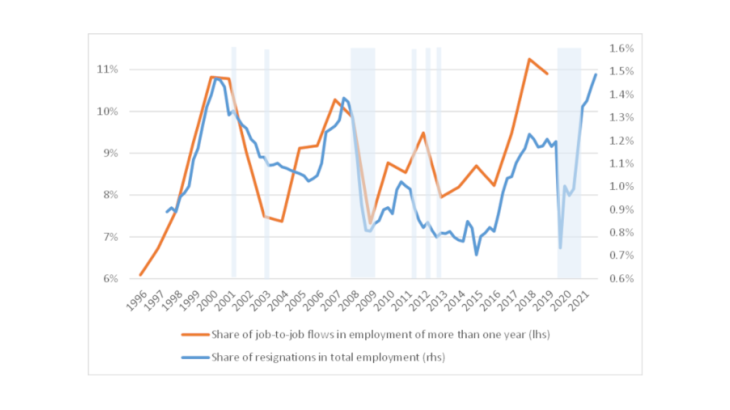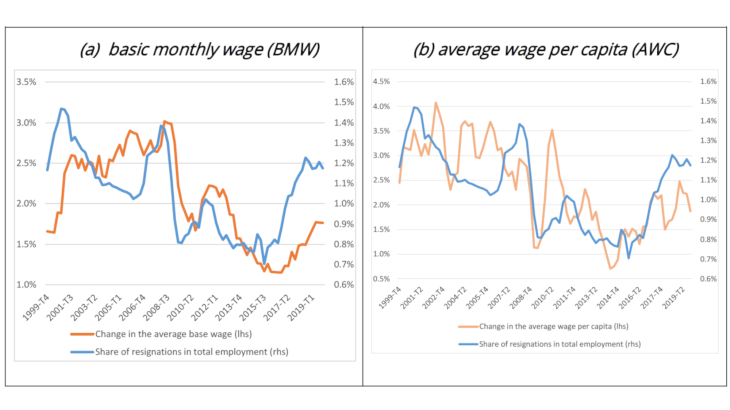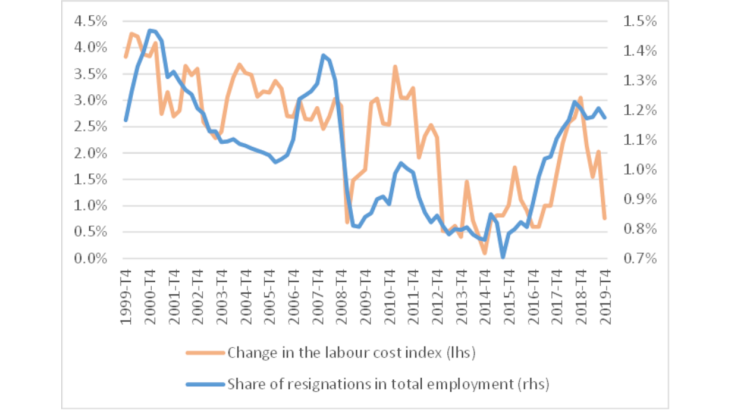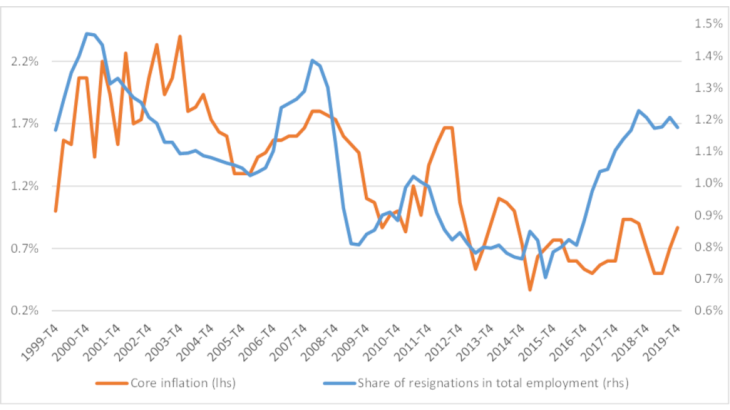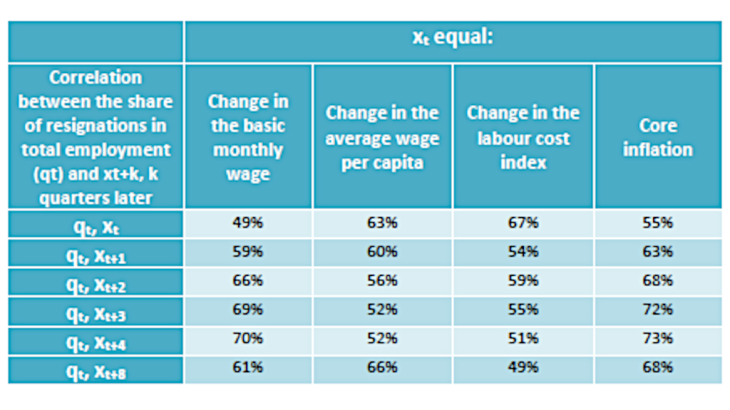Note: Resignations (establishments with more than 10 employees) = quarterly data; job changes = annual data (Berson et al. 2020); shaded periods = negative change in real GDP.
Wages and job-to-job moves
The negative empirical relationship between nominal wage changes and the unemployment rate is known as the Phillips curve. A fall in unemployment raises employees’ bargaining power, which pushes up wages, and vice versa.
For some time now, this correlation has been the subject of debate. Between the early 1970s and the mid-1990s, the coefficient of the relationship has decreased. This is referred to as the flattening of the Phillips curve. It has since remained stable, leading to a relatively flat curve (Rue de la banque No. 56, February 2018). According to Moscarini and Postel-Vinay (2016), the Phillips curve has even disappeared in the United States. Conversely, these authors highlight a strong correlation between wage evolution on the one hand and the rate of resignations and job changes on the other. Indeed, individuals generally leave their previous job if they are offered a higher wage or better working conditions. Thus, job-to-job flows lead to a rise in the nominal wages of employees who change jobs. These same flows can also have an impact on the wages of individuals who do not change jobs: employers will tend to raise the wages of their employees to encourage them to stay with their company.
As job-to-job moves are usually only identifiable with a time lag, i.e. the time it takes to compile the data, they can be approximated by the resignation rate in the economy. This rate can be viewed as an indicator of nominal wage growth (see Faberman and Justiniano, 2015 for the United States). Indeed, individuals who change jobs usually resign from their previous job and go directly to a new one, without being unemployed or exiting the labour market.
In France, wages are correlated with resignations
This relationship between job changes and wage dynamics is also observed in France.
If the analysis is restricted to persons with a job for more than one year, the wages of persons changing jobs are generally higher than those of people staying in the same job. Berson et al. (2020) show that job-to-job flows are strongly linked to wage dynamics: all other things being equal, over the period 1995-2015, French employees who changed jobs earned on average 1.8 percentage points more than if they had not changed jobs. However, the wage evolution remains correlated with the departmental unemployment rate through the wages of job changers, as a one percentage point increase in the unemployment rate reduces the wage gain of job switching by 0.23 percentage points. The smaller response of wages to job switching and the significant impact of the unemployment rate in France compared to the United States (see Hahn et al. 2021) are mainly due to the fact that job changes are less frequent in France, due to structural differences between the two economies and a more rigid labour market.
Resignation rates and wage dynamics are also correlated in France. Chart 1 shows the co-movement of job-to-job moves and resignations, with a rise in resignations and job changes during periods of economic growth, and a decline during periods of stagnation or recession, shown by the shaded areas. Both series are indeed cyclical: individuals are more likely to change jobs when economic conditions are favourable and more job opportunities are available. Companies are also more likely to offer higher wages to attract candidates. These higher wages provide an incentive for individuals to change jobs. During a recession, the opposite effect can be observed: there are fewer job offers, individuals have a lower bargaining power and resign less. Indeed, in France, resignations peak during periods of economic recovery.
